Soaring to save lives: The flight nurse who flies around the world responding to medical emergencies
Hemma Rajendra provides “bedside-to-bedside” care and ensures that patients in an emergency evacuation get continuous medical attention. Her job at EMA Global takes her all over the world, on air ambulances, medical jets and even commercial planes.
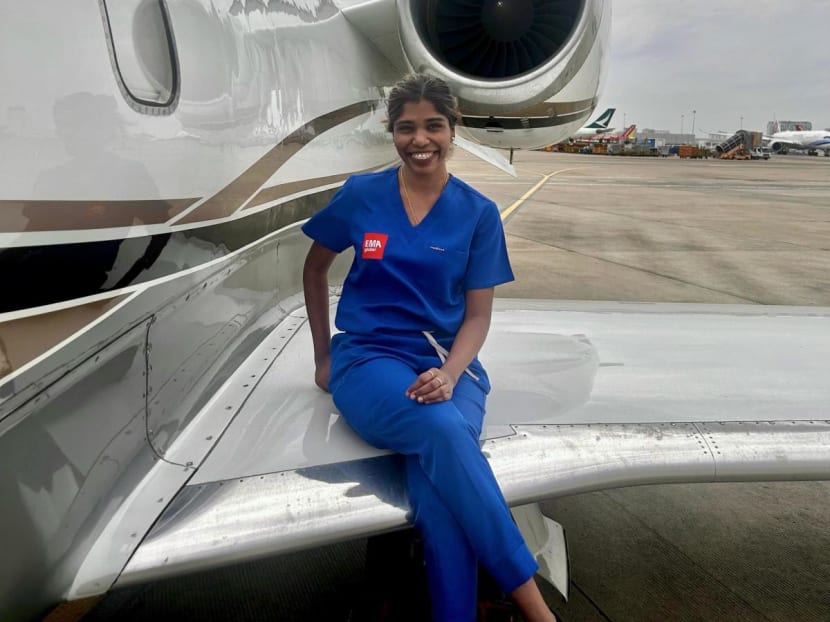
Ms Hemma Rajendra (pictured) has been a registered nurse for more than eight years and has spent the last three as a flight nurse for EMA Global. (Photo: Hemma Rajendra)

This audio is generated by an AI tool.
Last year, Ms Hemma Rajendra found herself on an air ambulance attending to a baby who had been born prematurely and was suffering from heart and lung conditions and needed urgent care.
Ms Hemma, 28, is a flight nurse with EMA Global, a Singapore emergency air transport service, and she flies around the world helping all kinds of people in dire medical emergencies.
In just three years on the job, Ms Hemma, a Malaysian, has seen a lot. Her team has assisted in emergency evacuations involving a woman who had fallen ill with life-threatening respiratory symptoms while backpacking in Da Nang, Vietnam; a couple who had a major ski accident in Hokkaido, Japan; and a man who had been severely injured while travelling in the Arctic Circle, among others.
She is part of an air ambulance evacuation crew, which is a specialised team of pilots, paramedics, doctors, and nurses – known as flight nurses, air transport nurses or aircraft nurses – trained to provide critical care in transit.
“We provide bedside-to-bedside care. We accompany patients from the hospital room, or wherever they are, to their destination, whether it’s another hospital or the safety of their home while providing medical care throughout the journey," she explained.
RIGOROUS AND INTENSE TRAINING
Ms Hemma, who is based in Singapore, has been a registered nurse for more than eight years. Before joining EMA Global, she worked in the ICU at a hospital in Kuala Lumpur, Malaysia, for five years.
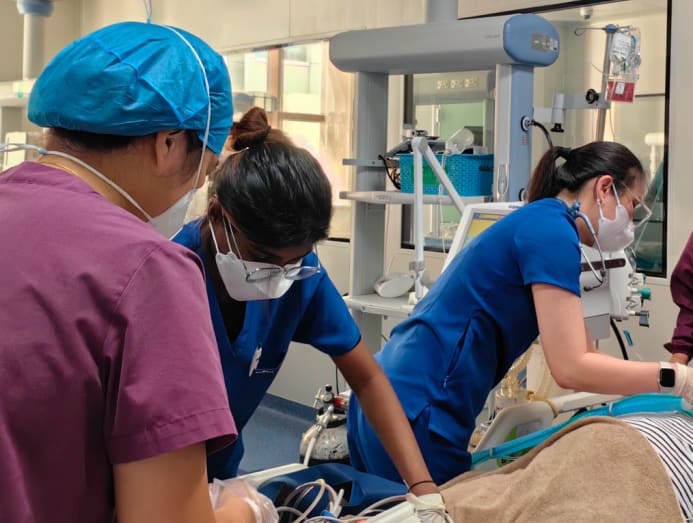
“Ever since I first learned what it was in nursing school, I’ve always wanted to be a flight nurse,” Ms Hemma said. “I like the rigour of ICU care, the responsibility of treating patients in critical condition and the ability to do it in an unconventional way, namely on an aircraft.”
To become a flight nurse, one needs at least five years’ experience in an ICU or emergency department.
She said that it requires “rigorous, intense and strenuous” training, possibly reminiscing about the intensity she had to endure to get to where she is today.
Flight nurses have to be certified in multiple life-saving techniques and protocols, including treating cardiac emergencies, managing life-threatening conditions in infants and children, and resuscitating newborns who require immediate medical attention after birth.
We accompany patients from the hospital room, or wherever they are, to their destination, whether it’s another hospital or the safety of their home while providing medical care throughout the journey.
To prepare to move into the air ambulance services sector after meeting the five-year requirement, Ms Hemma spent her off-duty hours obtaining these qualifications.
After she joined EMA Global, there was further training, involving caring for a patient during a flight. She went through extensive flight simulation exercises, aviation-related medicine courses and physiology training.
“Being a flight nurse combined the two passions I have – travel and nursing,” she said.
The training was a lot, she told me, but she knew that a flight nurse was what she wanted to be, so she pushed through with it.
“Even after earning all the necessary certifications and completing the training, I couldn’t just jump straight into the role,” Ms Hemma said.
“I had to spend a few months shadowing senior flight nurses on their missions, learning and observing before becoming an official flight nurse myself.
“Even though I have all these certificates, they don’t assess something just as important – physical strength,” she told me, laughing.
“On every mission, no matter where we go, I have to operate the stretcher system, navigate tight spaces on different types of planes, move swiftly through different hospitals and destinations, pack a full ICU setup into multiple bags, carry heavy oxygen tanks and even help transport patients’ luggage,” she added.
“I just know I need a whole lot of fitness for all of this."
The moment a call comes in, the leader of the operations activates the personnel on shift and the team springs into action.
For closer destinations such as around Malaysia, the team would be ready to start a mission within 4 hours of receiving a call. For further destinations such as in Europe or North America, they do their best to fly within 24 to 48 hours, most of which is needed to clear documents such as travel permits and insurance.
“We fly all over the world and anyone, anywhere can be our patient,” Ms Hemma said.
The operations' leader will decide how the team will get to the evacuation destination and will select and charter aircraft based on the patient's specific medical condition, urgency, and mission requirements. These aircraft can include nimble air ambulances, a 17-passenger Bombardier Global Express 6000, or commercial aircraft such as Singapore Airlines.
I like the rigour of ICU care, the responsibility of treating patients in critical condition and the ability to do it in an unconventional way, namely on an aircraft.
If the crew is travelling by company jet, the team's pilot maps out the safest and quickest route to get to the country, while operations officers check the aircraft thoroughly to ensure that the plane can fly safely.
For commercial flights, the operations' leader arranges seating based on the patient’s insurance coverage and medical needs. This could mean securing a business-class seat or reserving multiple seats in economy class.
The medical team assists the patient through airport security and boarding. Onboard, they alert the flight attendants of the patient’s condition and any necessary accommodations.
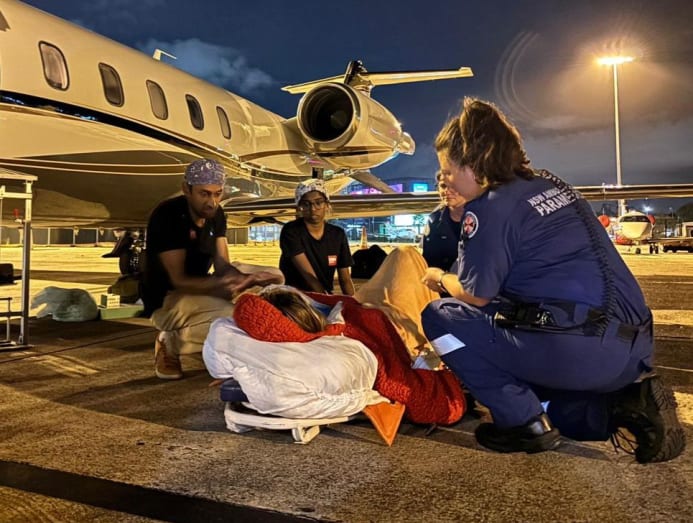
In this line of work that deals with medical emergencies, time is of the essence and so is precision.
To prepare for the mission, the medical team gathers all available information on the patient, because this determines what equipment and supplies they need to take along.
Flight nurses such as Ms Hemma will then check multiple times to verify that everything is in order, from medication and emergency equipment to intravenous fluid bags, batteries and backup supplies.
“One missing piece of equipment could mean the difference between life and death,” she said.
ALL MISSIONS ARE UNIQUE AND UNPREDICTABLE
For flight nurses, thinking on one's feet is crucial because unpredictability is part of the job.
“No mission is the same,” Ms Hemma said. “More often than not, things don’t go as planned. What matters is that we take good care of our patients and ensure that their well-being is never compromised.”
We fly all over the world and anyone, anywhere can be our patient.
Earlier this year, Ms Hemma was activated for a mission in Udon Thani, northern Thailand. The initial plan was for the patient, a Danish man, to be evacuated to Singapore for medical treatment.
However, upon assessing him in person, the team doctor decided that he should be flown directly to Denmark instead.
The sudden change of plan required quick adjustments to the length of the mission, but being adaptable is second nature to Ms Hemma and her team.
Even return flights may not go as planned. This period is known as an “empty leg”, where there are no patients on board.
On the Udon Thani mission, the plan had been to return directly to Singapore from Denmark – an empty leg of 12 hours.
However, to make the most of the trip, the team responded to another emergency, making a short two-hour flight from Denmark to Milan, Italy, to evacuate a traveller to Sydney, Australia. This slightly extended their mission before the team could return to Singapore.
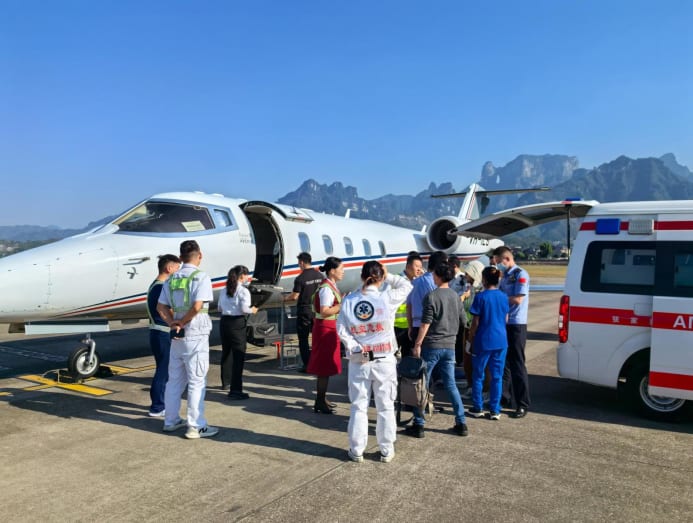
Another challenge is dealing with incomplete medical information, which means adapting in real-time once they meet the patient.
“When we do a fit-to-fly assessment over the phone, we rely on the local clinic’s evaluation,” Ms Hemma explained. “There are times when doctors on-site assure us that the patient is stable enough to fly, but when we arrive, we find them in extreme pain or with injuries too severe for air transport.”
In such instances, the team must make a medical decision: Either wait for the patient’s condition to improve or coordinate with local healthcare facilities for land transport to a hospital better equipped to stabilise them before the flight.
Flexibility is crucial when dealing with high-risk patients, as was the case with the premature babies from China.

Ms Hemma said that there are some missions requiring medical evacuations that are more "predictable". These include ski accidents in Hokkaido, Japan, during the winter season, and flood-related accidents in countries such as Thailand and Vietnam during the monsoon season.
“I never know when and what time a mission may start,” she added. “I can be activated at 2am and go back home at noon the same day, or activated at 9am and then return a few days later.
“All I know is to be on call 24/7 when it’s my shift and I need to be on standby.”
For sure, Ms Hemma’s work allows her to explore all sorts of places and corners in the world while saving lives.
She lit up when she shared with me the sights she has seen on the job, including the vast oceans surrounding Hawaii, the mountains of Nepal, the expansive land in different parts of China and the bustling city of San Francisco in the United States.
She was excited when she sent me the photos and videos she had taken with her fellow nurses and doctors, who got to bond and even play games with their patients on air ambulances.
If she was trying to wow me or make me jealous, it was definitely working.
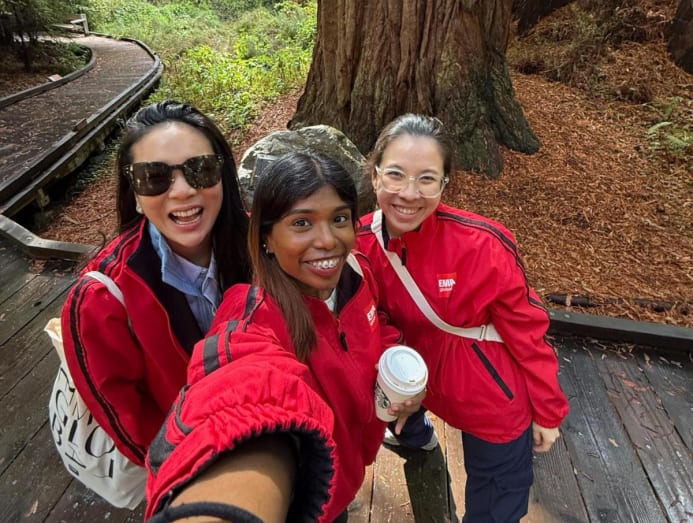
Another aspect of her work is that she has to occasionally sacrifice time spent with her family.
For instance, one of her missions to San Francisco in the United States was extended, resulting in Ms Hemma missing the Deepavali celebration with her family in Malaysia.
“I had to call my mum and apologise that I wasn’t able to be home for Deepavali. Thankfully, she was so understanding,” she recalled.
“What I didn’t know was that the team planned a Deepavali surprise for me.
“In the middle of San Francisco, we had pumpkin spice latte, which reminded me of chai (tea) from back home, and we visited the Muir Woods,” she added.
“We had an intimate, cosy Deepavali, making me feel like I was home away from home.
“I feel glad to be able to have this job. It’s not conventional, but knowing that I get to save lives all over the world and give people a sort of hope they’ve lost – it makes me proud and grateful."








